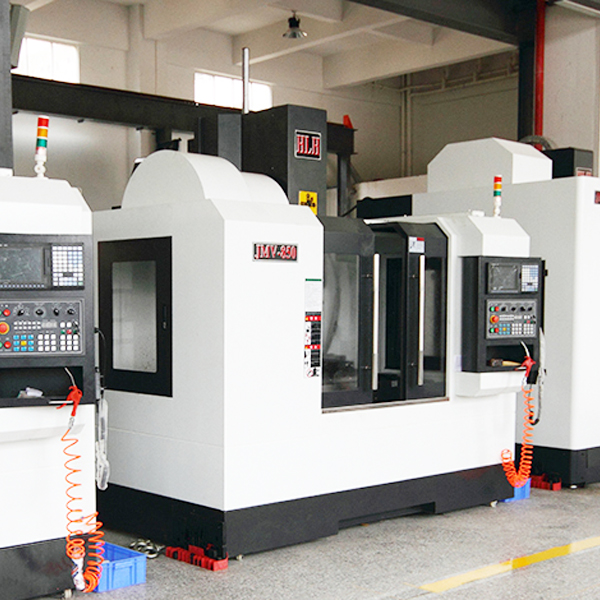Table Of Contents:
- Introduction
- What Is CNC Machining and How Does It Affect Metal Part Quality?
- What Is Additive Manufacturing and How Does It Influence Metal Part Quality?
- How Do CNC Machining and Additive Manufacturing Compare in Dimensional Accuracy?
- How Do Surface Finish and Material Properties Differ Between CNC Machining and Additive Manufacturing?
- What Are the Cost and Lead Time Differences Between CNC Machining and Additive Manufacturing for Metal Parts?
- How Do Design Complexity and Production Volume Influence the Choice Between CNC Machining and Additive Manufacturing?
- How Can You Choose the Best Manufacturing Process for Your Metal Parts Based on Quality Differences?
- List of Key Quality Comparison Metrics Between CNC Machining and Additive Manufacturing
- Final Thoughts
- Frequently Asked Questions
Introduction
In the competitive world of custom metal parts production, understanding the differences between CNC machining and additive manufacturing is crucial. You need a process that meets your design specifications while optimizing quality, cost, and lead time. This article explains the core differences between these two processes, focusing on how each affects metal part quality, dimensional accuracy, surface finish, material properties, and production efficiency. With clear comparisons backed by real-world examples, you will gain insight into which method best suits your project requirements and production volume.
What Is CNC Machining and How Does It Affect Metal Part Quality?
CNC machining is a subtractive process using computer numerical control to remove material from a workpiece. It is renowned for creating complex shapes while maintaining tight tolerances and achieving superior surface finishes.
How Does CNC Machining Work for Metal Parts?
CNC machining uses a digital 3D model that is translated into machining instructions via CAD/CAM systems. A machining center, such as a mill or lathe, removes material layer by layer using precise tool paths and adaptive cutting speeds to maintain dimensional accuracy and smooth surfaces.
What Are the Advantages of CNC Machining for Metal Parts?
CNC machining offers high precision, repeatability, and is compatible with metals like steel, titanium, and aluminum. Its subtractive nature produces uniform parts with strict tolerances, supports rapid design adjustments, and lowers prototyping and production costs, making it ideal for applications in aerospace, automotive, and medical fields.
What Are the Limitations of CNC Machining in Metal Part Production?
Despite its strengths, CNC machining generates significant material waste and is limited in accessing very delicate or internal geometries. Setup time can be long, and high-precision milling requires expensive equipment and skilled operators, which can impact overall production efficiency and cost structure.
ALSO READ: Innovative CNC Machining Techniques for Unmatched Precision
Which Metals Are Best Suited for CNC Machining?
CNC machining works well with hardened steel, tool steel, aluminum, titanium, and brass. Each metal benefits from the process’s high precision; for example, titanium achieves low surface roughness vital for medical devices, and aluminum’s lightweight and ease of machining are valued in automotive components.
What Is Additive Manufacturing and How Does It Influence Metal Part Quality?
Additive manufacturing, or metal 3D printing, builds parts layer by layer from a digital design. This method enables the production of intricate geometries and internal structures that are often impossible with subtractive methods, offering great design freedom and efficient material utilization.
How Does Metal 3D Printing Work in Additive Manufacturing?
Metal 3D printing fuses metal powders or wire feedstock using a high-energy source like a laser or electron beam. Processes like selective laser melting (SLM) or direct metal laser sintering (DMLS) spread thin layers of metal powder, which are then selectively melted and fused according to the digital design. Layers are built sequentially until the part is complete, often incorporating features like internal cooling channels and lattice structures.
What Are the Quality Benefits of Additive Manufacturing for Metal Parts?
This process reduces material waste and allows for complex internal geometries, leading to parts that are strong yet lightweight. It can produce fine details and intricate textures that are ideal for medical implants, aerospace components, and high-performance engineering applications. With proper parameter settings and post-processing, additive manufacturing can achieve mechanical properties and surface finishes comparable to traditional methods.
ALSO READ: 3D Printing & Hybrid Manufacturing: Transforming Aerospace Fabrication
What Are the Drawbacks of Additive Manufacturing in Metal Part Production?
Additive manufacturing typically has slower build times, leading to longer lead times, particularly for parts with large volumes. It may exhibit inconsistent surface finishes and mechanical properties due to its layer-by-layer approach, sometimes requiring post-processing like heat treatment or machining. High equipment costs and specialized material requirements can also drive up overall production expenses.
Which Metal Materials Are Commonly Used in Additive Manufacturing?
Common materials include stainless steel, titanium alloys, aluminum alloys, and cobalt-chrome. Each is selected based on performance needs such as strength-to-weight ratio, biocompatibility, corrosion resistance, and thermal properties.
How Do CNC Machining and Additive Manufacturing Compare in Dimensional Accuracy?
Dimensional accuracy directly impacts the performance of metal parts. CNC machining typically achieves very tight tolerances due to its subtractive process, while metal 3D printing can sometimes suffer from slight inaccuracies inherent to the layer-by-layer technique.
What Accuracy Levels Can CNC Machining Achieve?
CNC machining often reaches tolerances around ±0.005 inches thanks to controlled tool movements and advanced multi-axis machines. Real-time feedback mechanisms help maintain consistency, making it ideal for ultra-precise parts used in aerospace and medical applications.
How Accurate Is Metal 3D Printing Compared to CNC Machining?
Although metal 3D printing systems have improved, they generally achieve tolerances in the ±0.010 inches range. Factors such as powder quality, laser calibration, and resolution affect accuracy, although ongoing process improvements continue to narrow the gap with CNC machining.
How Does Accuracy Affect Metal Part Performance?
High dimensional accuracy ensures proper fit and function, especially where tight mechanical interfacing is necessary. Poor accuracy can result in assembly issues like misalignment or improper sealing, affecting overall safety, performance, and longevity of the parts.
How Do Surface Finish and Material Properties Differ Between CNC Machining and Additive Manufacturing?
Surface finish and material properties are key to both the aesthetics and functionality of metal parts. CNC machining tends to deliver smoother finishes and uniform material properties, while additive manufacturing may offer beneficial microstructural variations.
What Surface Finish Quality Does CNC Machining Provide?
Using fine cutting tools and optimal conditions, CNC machining produces very smooth surfaces that often require minimal post-processing. The excellent finish reduces friction and fatigue failure, which is critical in aerospace and medical applications.
How Does Additive Manufacturing Surface Finish Vary?
Due to its layer-by-layer method, additive manufacturing generally creates a rougher surface with visible steps between layers. This often necessitates additional steps like machining or polishing to achieve the desired smoothness. However, recent technology improvements have narrowed this gap considerably.
How Do Material Properties Compare Between Both Processes?
CNC machining preserves the uniform properties of the original workpiece, ensuring consistent hardness, strength, and ductility. In contrast, the rapid heating and cooling in additive manufacturing can alter material properties and introduce anisotropy. With proper control and post-processing, many of these variations can be minimized, and sometimes the unique microstructures enhance performance characteristics like fatigue life.
What Are the Cost and Lead Time Differences Between CNC Machining and Additive Manufacturing for Metal Parts?
Cost and lead time are major decision factors. While CNC machining has higher setup costs, it offers fast production and is cost-effective for mass production. Additive manufacturing is ideal for prototyping and complex designs but may have higher per-part costs and longer build times for large volumes.
How Does CNC Machining Impact Cost and Production Speed?
Material waste and the cost of high-precision tools contribute to CNC machining expenses. However, once programmed and set up, it delivers rapid cycle times and consistent quality, making it very efficient for large-scale production.
What Are the Cost Factors in Metal 3D Printing?
Costs in metal 3D printing include metal powder expenses, energy for laser processing, and extensive post-processing. Although it minimizes waste, the slower build speeds and high initial investment for equipment can lead to higher per-part costs, particularly in high-volume scenarios.
How Can Choosing the Right Process Optimize Cost and Lead Time?
Selecting the optimal process requires evaluating part geometry, volume, and tolerance requirements. CNC machining is typically more cost-effective and faster for large-scale production with standard geometries, while additive manufacturing is better suited for low-volume, complex parts where the cost of tooling is prohibitive.
How Do Design Complexity and Production Volume Influence the Choice Between CNC Machining and Additive Manufacturing?
Design complexity and production volume are key factors when choosing a manufacturing process. CNC machining is best for parts with moderate complexity and high repeatability, whereas additive manufacturing excels in producing intricate designs with internal structures.
What Design Features Are Better Suited for CNC Machining?
Designs requiring high precision and smooth surface finishes, such as intricate mating parts, threaded holes, or fine details, are best machined. CNC ensures minimal geometric deviations and is ideal for consistent mass production.
How Does Additive Manufacturing Enable Complex Metal Part Designs?
Additive manufacturing makes it possible to create designs that are not feasible with traditional subtractive processes, including internal cooling channels, lattice structures, and organic shapes. This design freedom is valuable for prototyping and low-volume production where innovation is key.
How Does Production Volume Affect Process Selection?
High-volume production benefits from CNC machining’s speed and repeatability, resulting in lower per-unit costs. For lower production volumes or highly customized parts, additive manufacturing may be more economical despite its longer build times.
How Can You Choose the Best Manufacturing Process for Your Metal Parts Based on Quality Differences?
Choosing the right process depends on assessing factors such as quality, cost, lead time, and production volume. A balanced evaluation of your design requirements against the strengths and limitations of each method is critical.
Save Manufacturing Costs With Best Manufacturing Process
Talk to our experts. Our qualified engineers are always happy to answer your questions.
What Factors Should Be Considered When Selecting CNC Machining or Additive Manufacturing?
Consider dimensional accuracy, surface finish, material properties, production volume, and design complexity. CNC machining is typically preferred for ultra-high precision and smooth finishes, while additive manufacturing offers advantages for complex internal geometries and innovative designs. Overall cost factors, including material waste and post-processing needs, must also be weighed.
How Does Precision Metal Solutions Help Clients Make the Right Choice?
Precision Metal Solutions analyzes your specific project needs to recommend the most suitable manufacturing process. By evaluating dimensional tolerances, surface finish, cost, and production volume, they deliver tailored solutions that ensure parts meet rigorous quality standards while optimizing production efficiency.
What Are Real-World Examples of Process Selection Based on Quality Needs?
For instance, aerospace components with tight tolerances and pristine finishes are often machined, while biomedical implants with internal channels may be best produced through additive manufacturing. Automotive parts benefit from CNC machining’s efficiency in high volumes, whereas prototyping and specialized designs can leverage the flexibility of metal 3D printing.
List of Key Quality Comparison Metrics Between CNC Machining and Additive Manufacturing
Below is a summary table illustrating key metrics for both processes:
| Quality Metric | CNC Machining | Additive Manufacturing | Impact on Part Quality |
|---|
| Dimensional Accuracy | ±0.005 inches | ±0.010 inches (typical) | High precision for tight tolerances |
| Surface Finish | Very smooth; minimal roughness | Rougher; may need post-processing | Affects part assembly and fatigue resistance |
| Material Consistency | Uniform properties | Possible anisotropy | Ensures reliable mechanical performance |
| Production Speed | Fast for high volumes | Slower, especially for complex builds | Impacts lead time and overall production cost |
| Design Complexity | Limited by tool access and geometry | High design freedom with internal features | Enables innovative, optimized part designs |
Final Thoughts
Both CNC machining and additive manufacturing offer distinct advantages for metal part production. CNC machining delivers high precision, excellent surface finishes, and rapid turnaround for high-volume production of high-tolerance components. In contrast, additive manufacturing excels at creating complex geometries and lightweight structures, ideal for prototypes and low-volume runs. By carefully considering factors such as dimensional accuracy, surface finish, production cost, and design complexity, you can choose the optimal process for your application. Partnering with an experienced manufacturer like HLH Sheet Metal can help ensure your custom metal parts meet the highest quality standards while optimizing cost and lead time.
Save Costs And Lead Time With HLH Sheet Metal
Talk to our experts. Our qualified engineers are always happy to answer your questions.
Frequently Asked Questions
Q: Which manufacturing process is best for high-volume production?
A: CNC machining is more suited for high-volume production due to its rapid cycle times, high repeatability, and lower per-unit cost once tooling is in place. It consistently produces parts with tight tolerances.
Q: Can additive manufacturing achieve comparable surface finishes to CNC machining?
A: Although additive manufacturing often results in a rougher finish because of its layer-by-layer process, post-processing such as machining and polishing can improve quality. However, CNC machining naturally produces smoother surfaces without additional steps.
Q: How do material properties differ between these processes?
A: CNC machining retains the original material properties, ensuring uniform strength and hardness. Additive manufacturing can alter microstructures due to rapid heating and cooling, potentially creating anisotropy, though proper post-processing can mitigate these effects.
Q: What types of metal parts benefit most from additive manufacturing?
A: Parts with complex internal geometries, lightweight lattice structures, or customized designs benefit from additive manufacturing. It is particularly suitable for prototypes, biomedical implants, and aerospace components requiring innovative designs.
Q: How can I decide which process to use for a specific project?
A: Assess factors like required dimensional accuracy, surface finish, production volume, material properties, and design complexity. Consulting with a partner such as HLH Sheet Metal can help determine the most suitable process.
Q: What are the cost implications of using CNC machining versus additive manufacturing?
A: CNC machining may have higher initial setup costs but lowers per-unit costs in high-volume production due to rapid cycles and material efficiency. In contrast, additive manufacturing can incur higher per-part costs and longer lead times, making it better suited for low-volume or highly complex designs.
Q: Are there any applications where both processes are used together?
A: Yes, hybrid manufacturing combines CNC machining and additive manufacturing. For example, a part may be 3D printed for complex geometry and then finished with CNC machining to achieve the required surface finish and tolerances, balancing design freedom with precision.
Get A Free Consultation From HLH Sheet Metal's Engineering Experts
Talk to our experts. Our qualified engineers are always happy to answer your questions.















